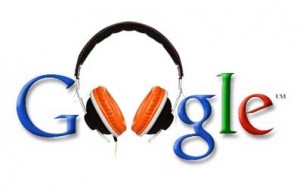Rumours are that Google Play will soon launch outside the US.  The music industry will be overjoyed to see a player of Google’s size enter the market, hoping they’ll sell music to a whole new demographic just as iTunes did a decade ago. However, this will be a different beast entirely, with new lessons to learn at a far faster rate.
The music industry will be overjoyed to see a player of Google’s size enter the market, hoping they’ll sell music to a whole new demographic just as iTunes did a decade ago. However, this will be a different beast entirely, with new lessons to learn at a far faster rate.
Let’s start by clarifying what iTunes is – a closed, standalone application that doesn’t allow purchases direct from browsers. It’s the only option for most fans, who are pushed there by traditional marketing messages and clunky url links, poorly targeted as Apple do not openly share user info or usage analytics. Don’t expect this to change. Apple sell devices, and an improved iTunes music store will not sell devices like an open app platform where other services, music or otherwise, can thrive.
So can Google Play fill this future gap in the market? It’ll be a project, not a product, launching as an average service that rapidly improves. Don’t make fast judgements, imagine what it could be…
- A pre-installed app on most of the world’s phones – currently 500 million (for perspective, iPods totalled 25m in 2005, 2 years after iTunes Store launched)
- with a range of billing options to suit every customer (balance comes from phone credit, monthly contract bill, or credit card).
- with its own hardware to bring music to the home
- all surrounded by the world’s most comprehensive ad network
But if Apple don’t care about music, why should Google? Because 96% of Google’s revenue come from search display ads, a figure that’s plummeting as users move from desktop to mobile. Mobile users don’t click on search ads, but they do engage with content ads, such as those around video and music. Hence the new and improved YouTube iOS app, and the Google Play store.
So Google have a reason to get all bases covered, quickly. Marketing to Google Play will be cheaper, easier, and more effective. Content, ads, and music will be closely integrated with a user journey smoother than anything we’ve ever seen. Monitoring and scaling will be simple due to Google’s open approach to analytics and their unrivalled global reach. Google are becoming an ad network with music “built right in” (to use an Apple phrase).
Labels blissfully await this marketing utopia, but is it just the tip of the iceberg? The Google Artist Hub, already live in the US, allows musicians to sell an unlimited amount of music directly through Google Play for a one-off $25 fee. Google keeps 30% of sales, the artist receives 70%. Currently targeted at independent musicians, it’s not an immediate threat to labels.
But what if Google’s target shifts away from the indie sector? D2F (Direct To Fan) platforms are nothing new, but scaled up and viewed over a 10 year period, remembering the inevitable tech & online infrastructure improvements, they will grow. The idea of musicians retaining their own copyright and going D2F through the largest ad & content network ever should be a sobering thought for businesses built on the exploitation of copyright.
Today labels offer cash, marketing reach, and expertise to claim ownership of copyright. Artists will always need cash, but if they can reach millions of people themselves, and the newly required expertise is still to be mastered by the investor, will today’s model continue?


 Farewell
Farewell  Part 2 : How Spotify Can Embrace Active Sharing
Part 2 : How Spotify Can Embrace Active Sharing  Part 1 : Why Spotify’s Social Strategy is Fundamentally Flawed
Part 1 : Why Spotify’s Social Strategy is Fundamentally Flawed  Gotye - Making Mirrors
Gotye - Making Mirrors  Why Streaming Can Make Music Special Again
Why Streaming Can Make Music Special Again 


No Comments